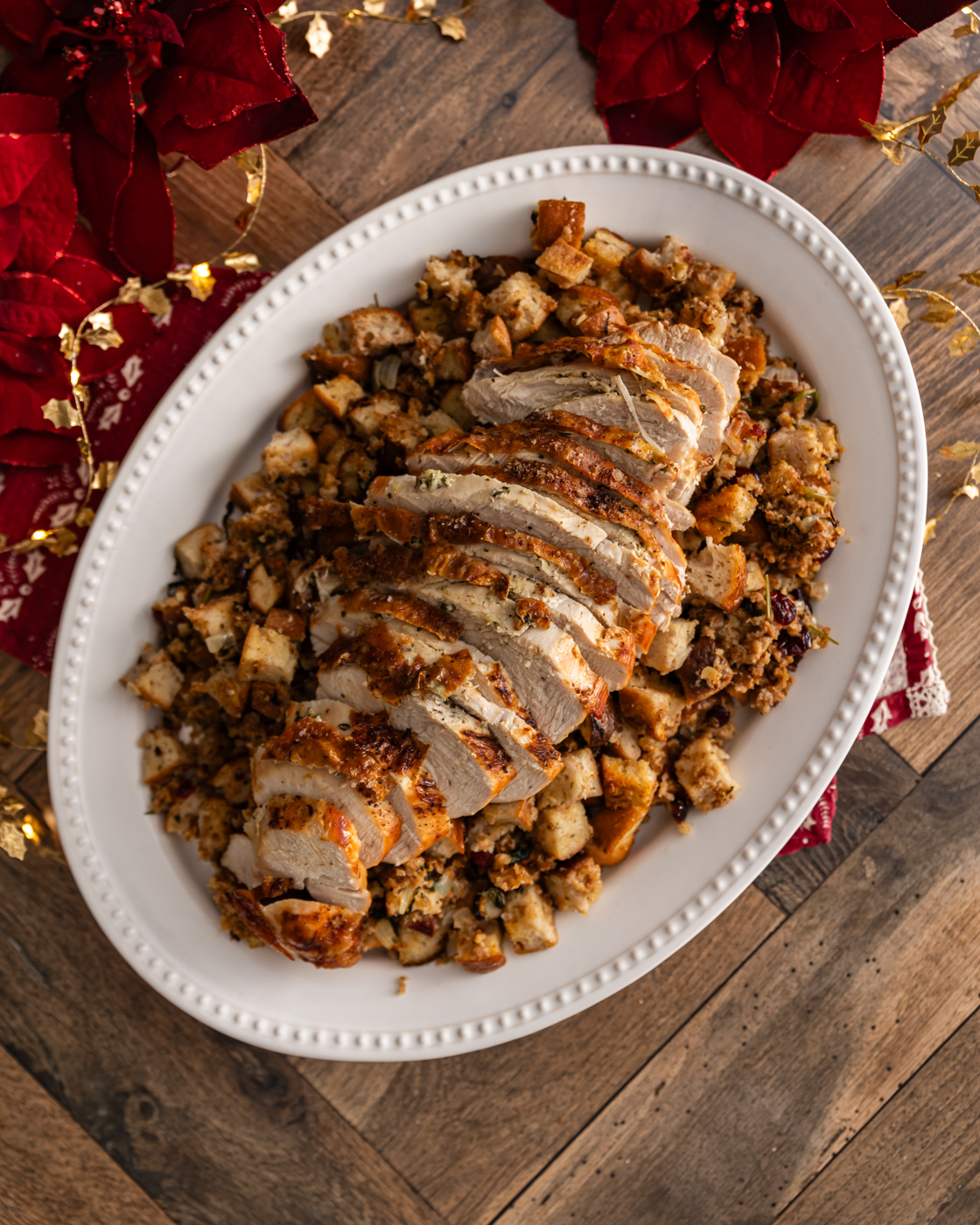
Sourdough Bread Masterclass With Patrick Ryan
Sun Mar 29 2020

Patrick Ryan (Firehouse Bakery) will showcase how to make a a traditional sourdough bread including how to make the starter.
Subscribe to our YouTube channel to watch all of our recipe videos.
Giving life to your very own sourdough starter
Day 1
50g wholemeal flour
50g water
- Place the flour and water into a clean bowl and stir together until fully combined.
- Cover and leave at room temperature overnight.
Day 2
50g wholemeal flour
50g water
- To the sourdough starter add 50g wholemeal flour and 50g water. Stir together until fully combined.
- Cover and leave at room temperature overnight.
Day 3
100g wholemeal flour
100g water
- Throw away 100g of the starter.
- To the remaining starter, add the 100g flour to the starter and mix in the 100g water.
- Cover and leave overnight.
Day 4
100g wholemeal flour
100g water
- Throw away 150g of the starter.
- To the remaining starter, add the 100g flour to the starter and mix in the 100g water.
- Cover and leave overnight. The starter should start to smell pleasantly sour with small bubbles appearing on the surface.
Day 5
150g wholemeal flour
150g water
- Throw away 200g of the starter.
- To the remaining starter, add the 150g flour to the starter and mix in the 150g water.
- Cover and leave overnight. The starter should appear active and full of bubbles.
Day 6
200g wholemeal flour
200g water
- The starter should be quite active now and be full of little bubbles and smell slightly sour.
- Throw away 250g of sourdough starter.
- To the remaining starter, add the 200g flour to the starter and mix in the 200g water.
- Cover and leave overnight.
Day 7
- The starter should now be very active and full of bubbles and is now ready to use.
- Remember when making your sourdough bread to always retain some sourdough starter which will be fed/refreshed, ensuring you have some sourdough starter for the next dough.
Maintaining your sourdough starter
Hi, I am your sourdough starter. If you look after me I will give you an endless supply of wholesome, tasty sourdough breads. I am pretty easy going and don’t require anything too fancy. A regular diet of flour and water will keep me strong and healthy. You can use me every day if you wish but I understand that you’re pretty busy and you may only get to hang out with me once a week. I get very hungry when left at room temperature so just pop me into the fridge where I can chill out until you need me. I can’t wait for us to bake breads together.
Your sourdough starter/culture is a bubbling living collection of friendly bacteria that will be used to make your dough rise. It is the natural yeast that will be used to make your sourdough bread.
Sourdough starter is best stored in a bowl or plastic container, something that can be covered. Make sure to allow room within the container for the sourdough starter to grow and rise.
To refresh or feed the sourdough starter:
- Whatever weight of sourdough starter you have add the same weight of flour and the same weight of water.
- For example, to 200g of sourdough starter add 200g of flour and 200g water. Stir everything together.
- If you have too much starter discard the excess and keep back what you need.
- If the sourdough starter is stored at room temperature it will require to be refreshed/fed every day.
- For the home baker where you might only bake once a week, having to feed/refresh your sourdough starter every day can become quite expensive.
- Therefore, your starter can be stored in the fridge for up to 10 days and taken out when needed.
- If using the starter from the fridge:
- Take the starter out of the fridge the day before you plan to bake. This will allow the starter to come to room temperature. The night before you plan to bake, refresh/feed your starter as per the instructions above. Leave the sourdough starter at room temperature overnight. The next morning the starter should be active and full of bubbles and ready to bake with.
- Take what you need to make your dough. Feed the remaining starter and return it to the fridge.
White Sourdough
(Makes 2 loaves. Halve the amounts for a single loaf)
- 800g strong white flour
- 10g salt
- 460ml water
- 320g sourdough starter
- Add the flour to a clean mixing bowl. Mix the salt through the flour. Add the water and sourdough starter to the flour. Combine all the ingredients together to form a rough dough.
- Turn the dough out on to a clean surface and knead for approximately 10 minutes or until the windowpane effect has been achieved. The dough should be smooth, soft and elastic.
- When kneading, do not worry if the dough is slightly wet or sticky. Resist the temptation to add any extra flour.
- Return the dough to the mixing bowl, cover with cling film and allow the dough to prove for 4 hours at room temperature.
- After 4 hours turn the dough onto a clean work surface and knock the dough back. Knocking back the dough simple involves knocking the air from the dough which helps to equalise the temperature within the dough.
- Form the dough into a tight round ball.
To prove & bake using a proving basket:
- Prepare a proving basket by lightly dusting with flour. Place the dough, seamed side facing up, into the proving basket. Loosely cover the proving basket with a clean tea towel and leave to prove for another 3 – 3½ hours.
- Alternatively, to prove overnight for baking first thing in the morning, place into a fridge and leave overnight.
- Using a fridge reduces the temperature of the dough allowing it to prove slower and longer which allows for a greater development of flavour within the dough but also increasing its digestibility. As dough ferments or proves the gluten within the dough breaks down. The longer a dough is allowed to prove the more flavour it will contain and the easier it is for your body to digest.
- To bake, preheat your oven to 230°C / 210°C fan assisted (445°F / Gas 8). Place a shallow baking tray into the bottom of the oven to preheat with the oven.
- Carefully turn your dough out from the proving basket onto a baking tray dusted with flour (the domed side with the indentations from the proving basket should now be facing up and the seamed side on the baking tray).
- Using a sharp knife cut the surface of the dough, this is what is known as the baker’s signature. The dough can be cut up to ½ cm deep. (This isn’t just for aesthetics, scoring the bread also helps control where and how it rises while baking)
- Boil a kettle of water then pour the boiled water into the dish that was preheated in the bottom of the oven, this will create steam in the oven while baking.
- Place the baking tray with the sourdough into the oven and bake for 30 to 35 minutes or until a good crust has formed and the loaf sounds hollow when tapped on the base.
Alternatively, if you do not have a proving basket, you can use a large glass casserole dish to prove and bake your sourdough.
To prove & bake using a Pyrex dish:
- Line a 2.5l round Pyrex dish with a clean tea towel and dust with flour. Place the formed ball of dough into the Pyrex dish lined with the floured tea towel then place the lid (the inside of the lid lightly greased and floured) on the Pyrex dish. Leave to prove for another 3 – 3½ hours.
- Alternatively, to prove overnight for baking first thing in the morning, place into a fridge and leave overnight.
- The reason for using a Pyrex dish is that it acts like a proving basket. The dish acts as a support to your dough. It encourages the dough the take on the shape of the dish and to prove up and not just to spread out flat. The dough will also be baked in the Pyrex dish.
- Using a fridge reduces the temperature of the dough allowing it to prove slower and longer which allows for a greater development of flavour within the dough but also increasing its digestibility. As dough ferments or proves the gluten within the dough breaks down. The longer a dough is allowed to prove the more flavour it will contain and the easier it is for your body to digest.
- To bake, preheat your oven to 230°C / 210°C fan assisted (445°F / Gas 8).
- Flip the Pyrex dish over so the bowl of the Pyrex dish now becomes the lid. Carefully remove the tea towel.
- Using a sharp knife cut the surface of the dough, this is what is known as the baker’s signature. The dough can be cut up to ½ cm deep. (This isn’t just for aesthetics, scoring the bread also helps control where and how it rises while baking)
- Cover the dough with the bowl of the Pyrex dish and place the Pyrex dish into the preheated oven.
- By baking the dough in the Pyrex dish there is no need to steam the oven. Baking with a lid on the Pyrex dish creates its own steam which will allow the dough to rise and open up while baking. The Pyrex is very similar to the old style of Dutch oven baking.
- Bake for 25 minutes then remove the lid from the Pyrex dish and continue to bake, uncovered, for a further 25 minutes until a good crust has formed and the loaf sounds hollow when tapped on the base.
- Once baked remove the bread from the Pyrex dish and allow to cool.

Patrick Ryan is the face behind the Firehouse Bakery. Having swapped laws books for chef knives Patrick now spends his days returning bread to its rightful place as King of the table. Having worked throughout Ireland, Australia and the UK Patrick returned home to set up the Firehouse Bakery. Despite the ongoing recession at the time Patrick choose to stage his bread revolution with the opening of his bread school on Heir island off the coast of West Cork.
His message was simple “bread is king” He wanted everyone to have good bread, all the time. And not just good bread, but bread that is good for you, bread that does you and your body good and he will even show you how to make your own.5 years on from what began on an island of 27 people the Firehouse Bakery has grown from strength to strength. Patrick operates an award winning bakery and cafe in Delgany Wicklow where you will find an open plan bakery, a bustling cafe and wood fired oven, His bread can be found in cafe and restaurants throughout Dublin and the bread school on Heir island appears to be always fully booked. Patrick is a founding member of realbread Ireland and is also a Failte Ireland Food Champion and with plans for new and exciting projects Patrick’s bread revolution is only getting started.





